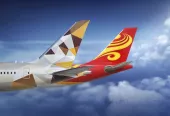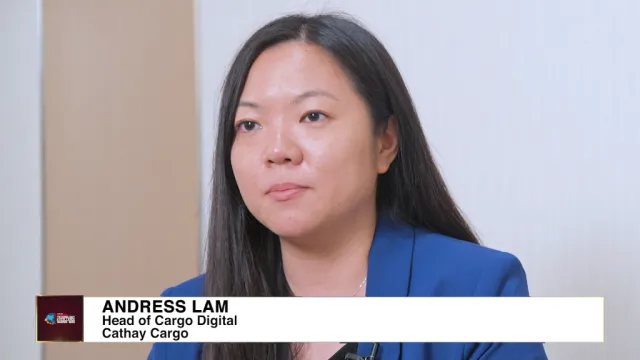Air China August passenger capacity up 4%
But its cargo load factor suffered a decrease of 1.6 percentage points.
Passenger traffic has shown a steady year-over-year growth across the board during August 2011. As for month-over-month performance, domestic and international traffic have both increased, while number of passengers carried on regional routes has slightly decreased. As for cargo, Revenue Freighter Tonne Kilometres (RFTK) of domestic and regional services continued to rise, while domestic freighter tonnage carried also recorded a slight increase. In month-over-month indicators, domestic cargo services showed an increase while international and regional operation experienced a decline in performance.
Passenger traffic for August achieved a year-over-year growth exceeding the rise in capacity. Passenger capacity, measured in Available Seat Kilometres (ASK), was up 4.0% year-over-year while passenger traffic, measured by Revenue Passenger Kilometres (RPK), rose by 6.6%. Capacity on domestic routes increased by 1.4%, while RPK climbed 5.3% year-over-year. Capacity on international routes grew 7.5%, with RPK internationally increasing by 7.6%. Capacity on regional routes expanded 13.5%, with RPK regionally rising by 18.3%. The passenger load factor was 86.1%, up 2.1 percentage points year-over-year. The passenger load factor for international, domestic and regional routes increased by 0.1, 3.2 and 3.5 percentage points respectively year-over-year.
Cargo capacity, measured in Available Freighter Tonne Kilometres (AFTK), rose 1.6% year-over-year in August. Revenue Freighter Tonne Kilometres (RFTK) decreased by 1.2%, and freighter tonnage carried increased by 1.6%, compared with August 2010. The cargo load factor was 57.7%, a decrease of 1.6 percentage points year-over-year.
Starting from 2 August, the company launched a new domestic flight between Shanghai and Urumqi twice a week. And starting from 27 August, the company also launched another new domestic flight between Beijing and Lianyungang three times a week and a new international flight between Wuhan and Tokyo two times a week.
During the month, Air China purchased a total of 290,000 tonnes of jet fuel at an average price of RMB7,719 per tonne, a year-over-year surge of 36%. The average jet fuel purchase price at international airports was RMB6,826 per tonne, and the average purchase price of jet fuel for international flights at the top six Chinese airports was RMB7,195 per tonne, representing steep increases of 37% and 39% year-over-year, respectively. The average jet fuel purchase price for domestic flights was RMB8,221 per tonne, a rise of 36% compared with August last year, according to an Air China report.
Starting from 1 August, the purchase price of domestic jet fuel rose by RMB85 per tonne.
During the month, the company added five aircraft, including one B777-300ER, two B737-800s, one A320 and one business jet, while retiring one A320 aircraft. As at the end of August, Air China operated a fleet of 302 aircraft.



















 Advertise
Advertise









